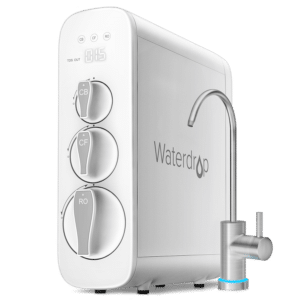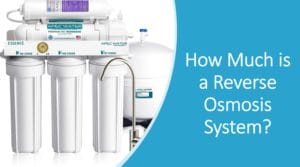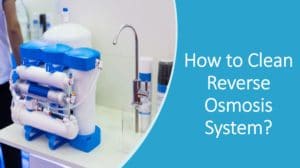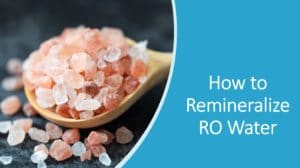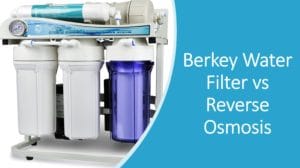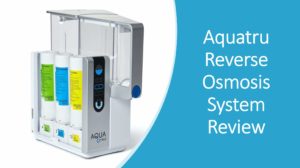If you’re concerned about the bacteria in your drinking water, you’re not alone—according to a study conducted for the National Sanitation Foundation, over 70% of Americans drink tap water, but 55% of those people worry about the contaminants it could contain.
Whether you found this page because you’re looking for a reverse osmosis system for the first time or because you want to have a better understanding of what your current system filters out, you’re in the minority; the same study shows that 42% of Americans don’t filter or treat their water.
So, you might be wondering—does reverse osmosis remove bacteria? In short, yes, your reverse osmosis system is effective at removing many types of bacteria.
In this guide, we’ll break down the must-knows about how RO Systems work on bacteria.

Does Reverse Osmosis Remove Bacteria from Water?
Yes, Reverse osmosis systems have a very high effectiveness in removing bacteria. The average pore size of an RO filter is 0.0001 microns.
Some of the most common bacteria that reverse osmosis systems remove include:
- Campylobacter
- Salmonella
- Shigella
- E. coli
How Reverse Osmosis Systems Work
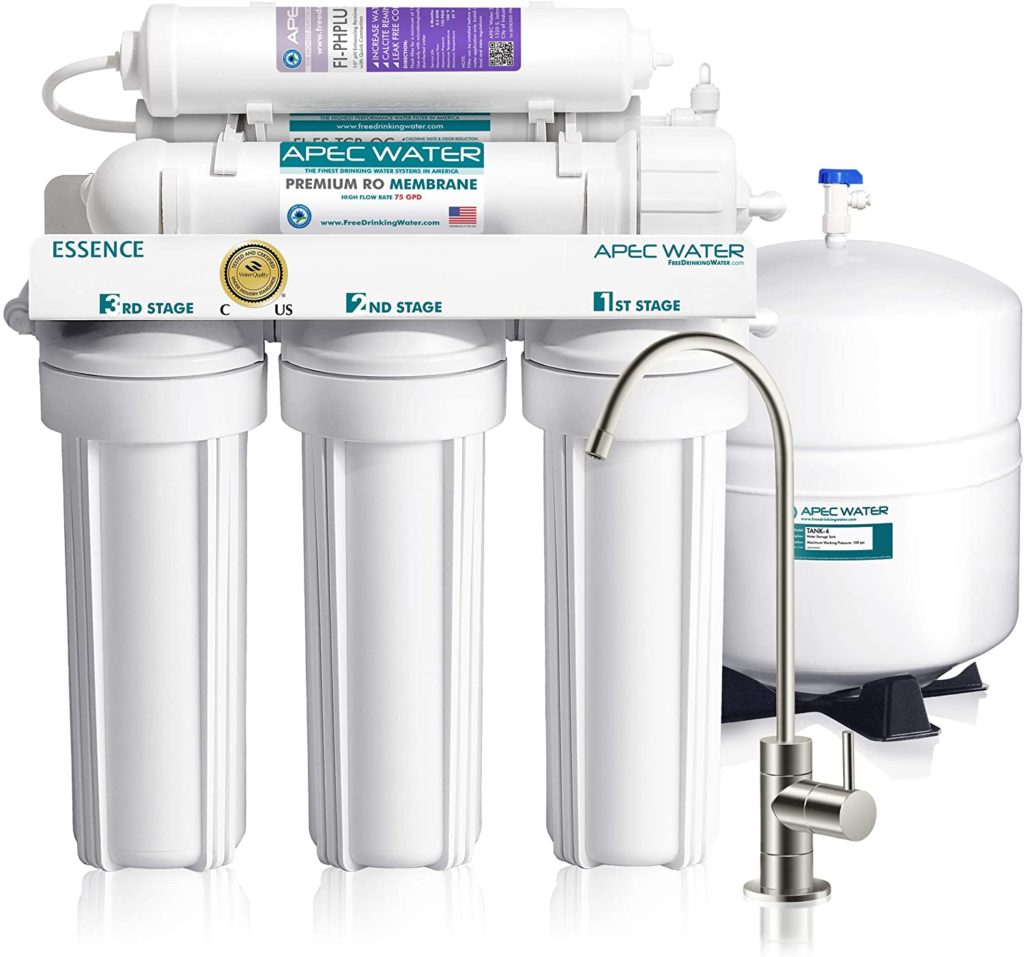
If you don’t remember how reverse osmosis works from your high school science class, we’ll give you a little refresher here. Reverse osmosis is the concept of passing water from a more concentrated solution to a more diluted one.
It does so by using a semi-permeable membrane. Furthermore, filters before and after the membrane often accompany reverse osmosis systems for even better filtration.
The holes in the semi-permeable membrane are so tiny that water molecules can pass through it, but most other contaminants, including bacteria, can’t.
The Mechanics of Reverse Osmosis on Bacteria
You might be wondering—will reverse osmosis remove bacteria of all kinds?
Assuming that you keep your reverse osmosis system maintained and running well, it should remove all kinds of bacteria from your drinking water. The reason being is that bacteria range from 1 to 10 microns long and 0.2 to 1 micron wide.
Therefore, since the smallest bacteria is 0.2 micron and reverse osmosis systems have pore sizes of about 0.0001 microns, bacteria can’t pass through a well-functioning and maintained reverse osmosis system.
Supplements for Your Reverse Osmosis System
Provided that you maintain your reverse osmosis system, there’s no need to add anything to assist it with removing bacteria. However, if you want an added layer of protection just in case, you can install ultraviolet light.
Ultraviolet light works by damaging the genetic material of bacteria. As a result, bacteria that come in contact with ultraviolet light die.
If you wish to use ultraviolet light with your reverse osmosis system, you should install the light after the water passes through the system’s filter. That way, the reverse osmosis’ semi-permeable will capture most (or all) of the bacteria, and the ultraviolet light will kill any bacteria that may have snuck through.
It’s best to have a professional install ultraviolet light for you if you wish to go this route, for UVC radiation can burn your skin and eyes.
Maintaining An RO System For Bacteria Removal
A reverse osmosis system’s ability to trap bacteria is only as good as the maintenance you give it.
Every reverse osmosis system’s maintenance will look a little different depending on the brand you buy. Therefore, you should always consult your reverse osmosis’ manual. However, we’ll share a maintenance overview with you here so that you have an idea of what to expect.
Your reverse osmosis system will have at least a few filters. The first filter is a pre-filter, which helps remove larger particles from your water. Dirt and sand are some examples.
Keeping this filter clean is crucial so that it doesn’t get clogged and disrupt the following stages, which is where it’ll remove bacteria. Therefore, you should aim to clean the pre-filter every six to nine months.
The next filter is typically made of carbon which removes chlorine and other chemicals that make your water taste poorly. At this point, any bacteria in your water will still be present. You should clean out your carbon filter every six to nine months to make sure water can easily flow through.
At this point, your water will arrive at the reverse osmosis membrane, and this is where it’ll remove bacteria. You’ll likely only need to change the system’s semi-permeable membrane once every two to three years. Local water conditions and how much water you use will determine how quickly the membrane will wear down.
Will Bacteria Get Into My Water If I Don’t Change the Filters?
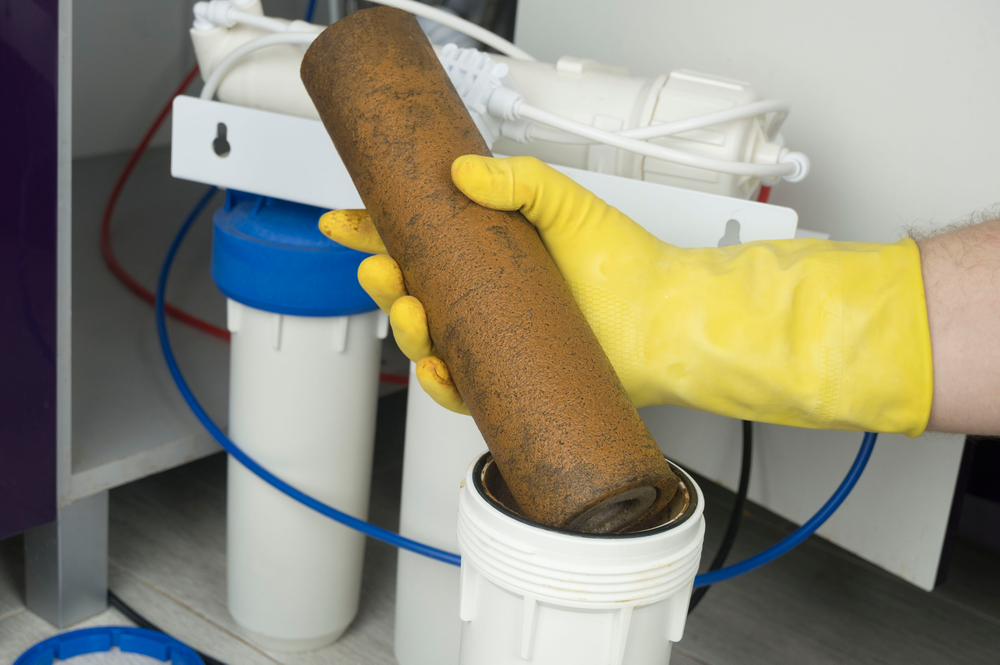
If you realize that you passed the deadline for when you should have changed your reverse osmosis system’s filters, rest easy. More often than not, it’ll reduce the flow of water passing to the semi-permeable membrane, but it isn’t likely that bacteria will get into your water because of it.
However, if the semi-permeable membrane starts degrading because you didn’t change it within the recommended timeframe, it’s possible this could affect the size of the membrane’s pores. As a result, bacteria could get into your water.
If excess bacteria is still in your water despite several filter change cycles, then you might need to get a new and more efficient reverse osmosis filter.
What Other Contaminants Does Reverse Osmosis Remove?
You might be wondering—are there other contaminants that reverse osmosis systems remove?
Yes, there are. Below are some other contaminants that you can remove from your drinking water by setting up a reverse osmosis system.
- Protozoa (Examples: Cryptosporidium and Giardia)
- Viruses (Examples: Hepatitis A and Norovirus)
- Copper
- Chromium
- Lead
Furthermore, your reverse osmosis system may help reduce the amount of arsenic, fluoride, and sulfate in your water, among others.

